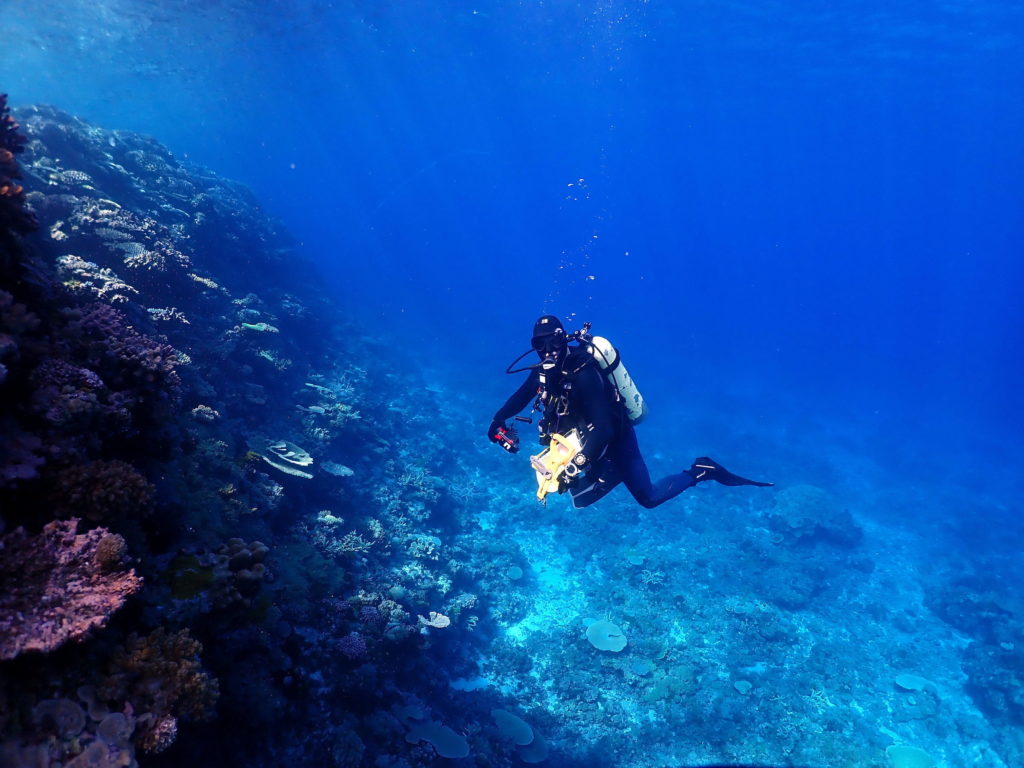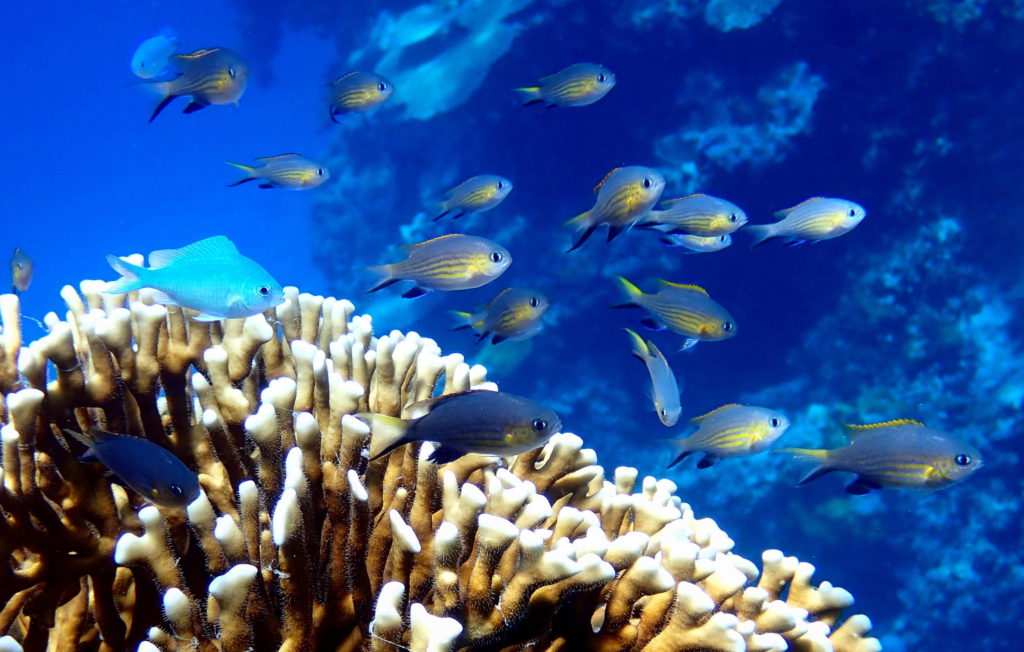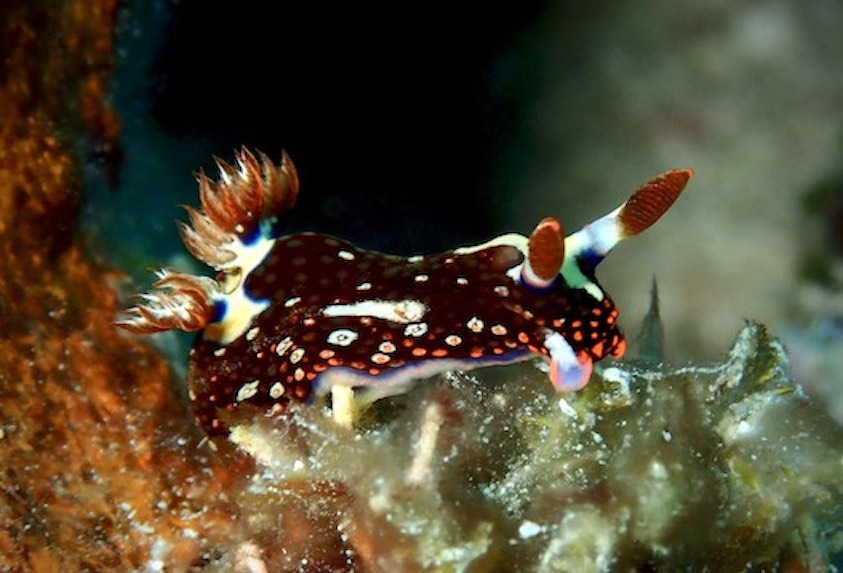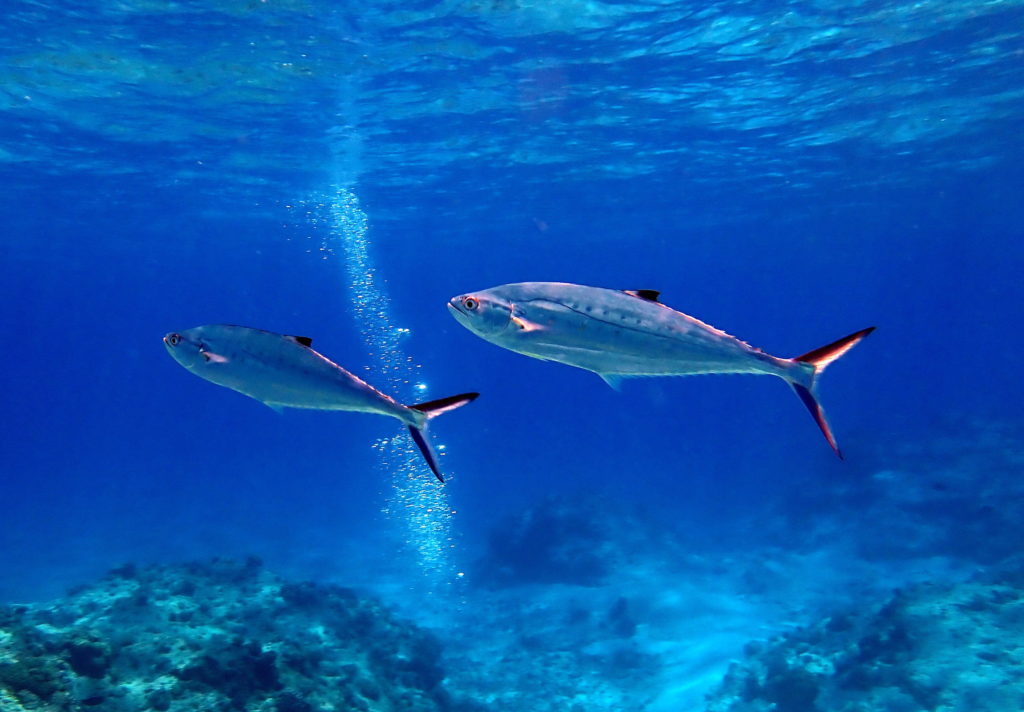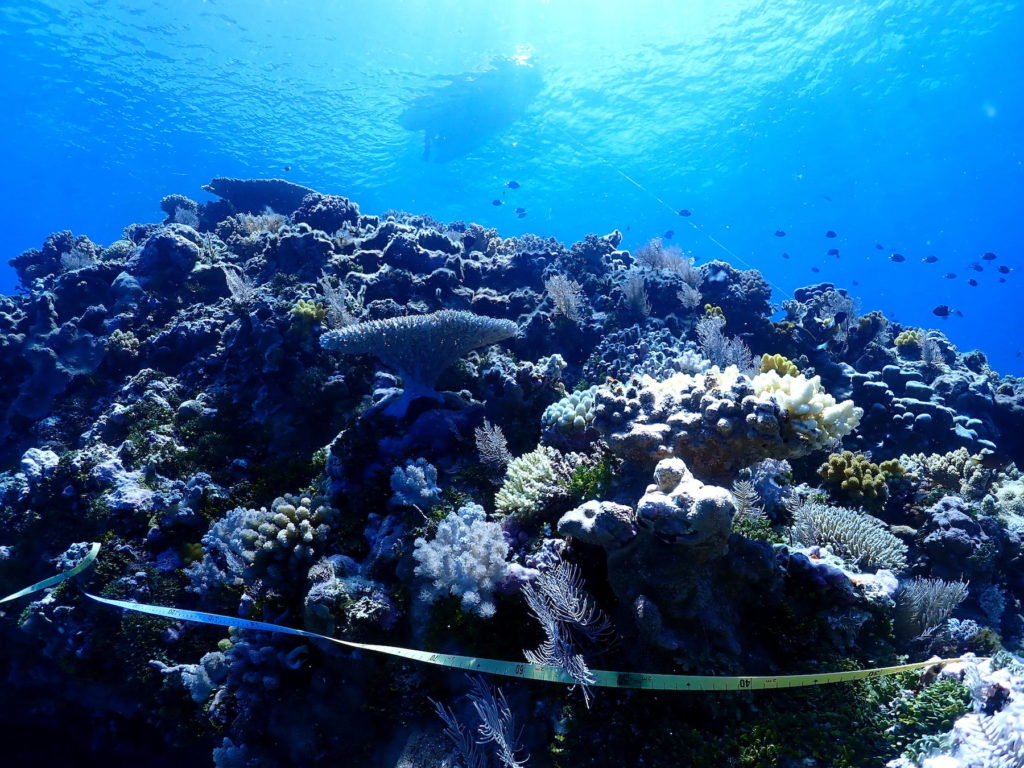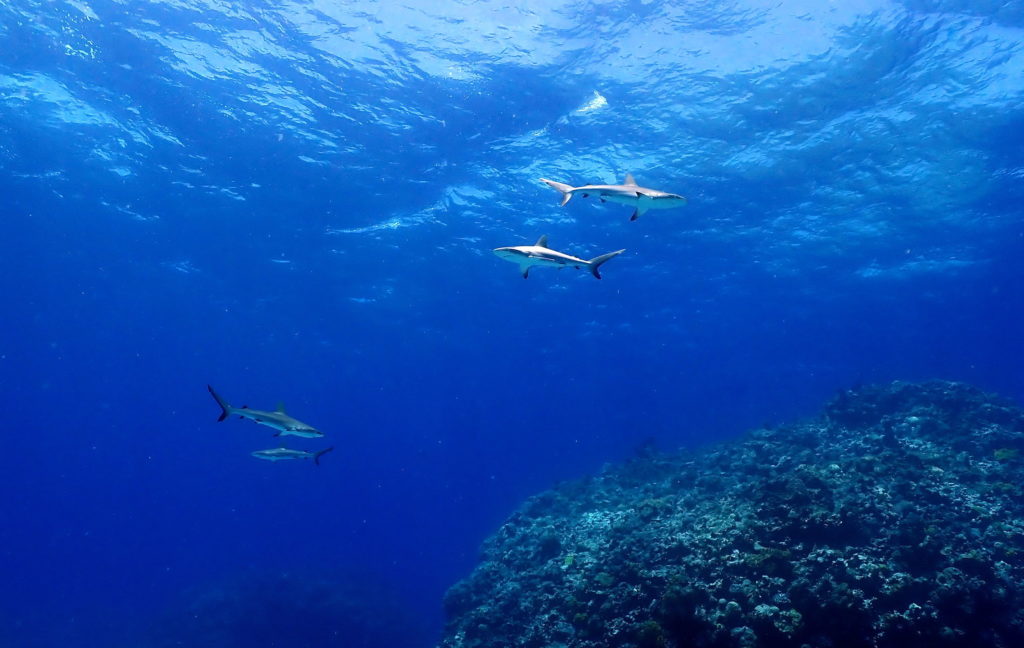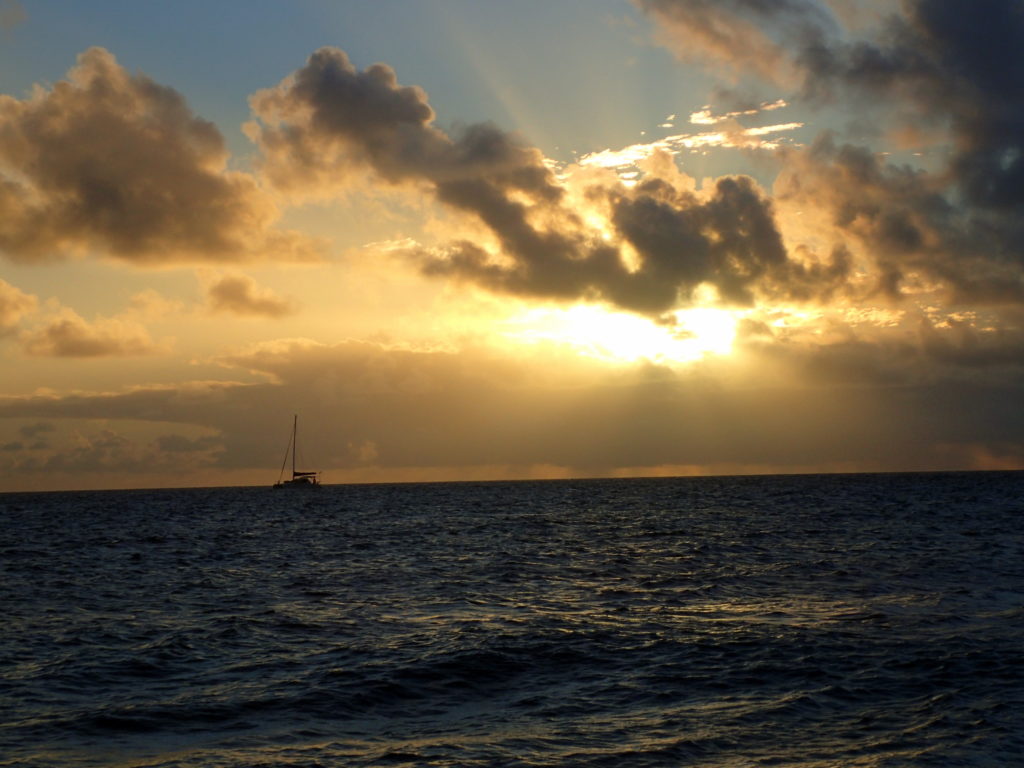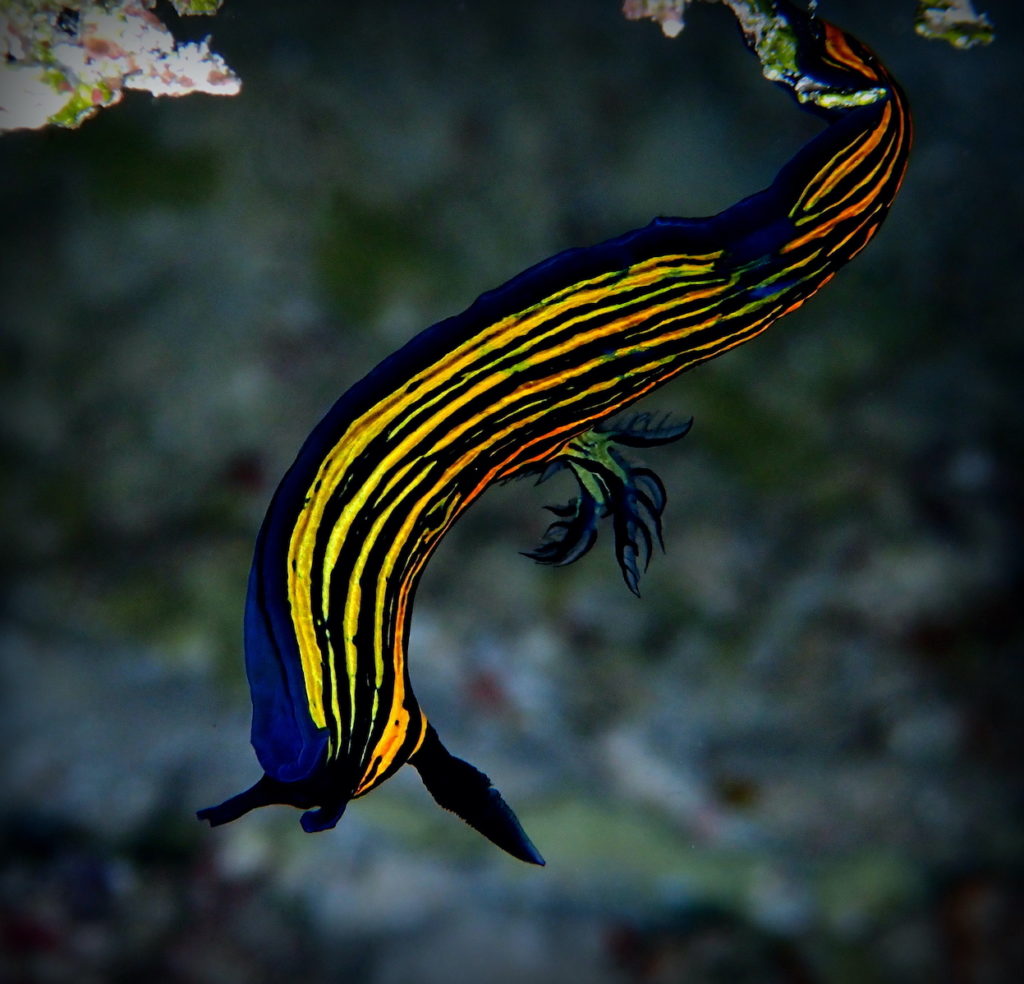Not many people would be willing to leave their family and friends over Christmas and New Year’s, but for a group of overly-enthusiastic RLS divers there was no better way to bid bon voyage to the flaming garbage year of 2020 than counting fish in the Coral Sea.
Initially the plan was to survey inshore (read: murky) reefs around the Keppel Islands, finishing with sites in the Capricorn Bunkers. Due to some disagreeable weather during the preceding leg these sites had already been completed by the previous group of divers. This left our lucky team with a plethora of glorious Coral Sea sites to survey – meaning warm, Gatorade-blue water, 50m+ vis, and plenty of interesting critters to see.
The team comprised of Dusty, our fearless skipper; Mez, dive leader and Eviota veteran; and Chris and myself (Sophie), the two Eviota newbies.
We set sail from Gladstone to the GBR to survey some high-priority sites in the SE Swains Reef. Arriving there the next afternoon, we were able to jump in and manage two quick dives to tick off these sites before immediately setting sail to our main target: The Coral Sea.
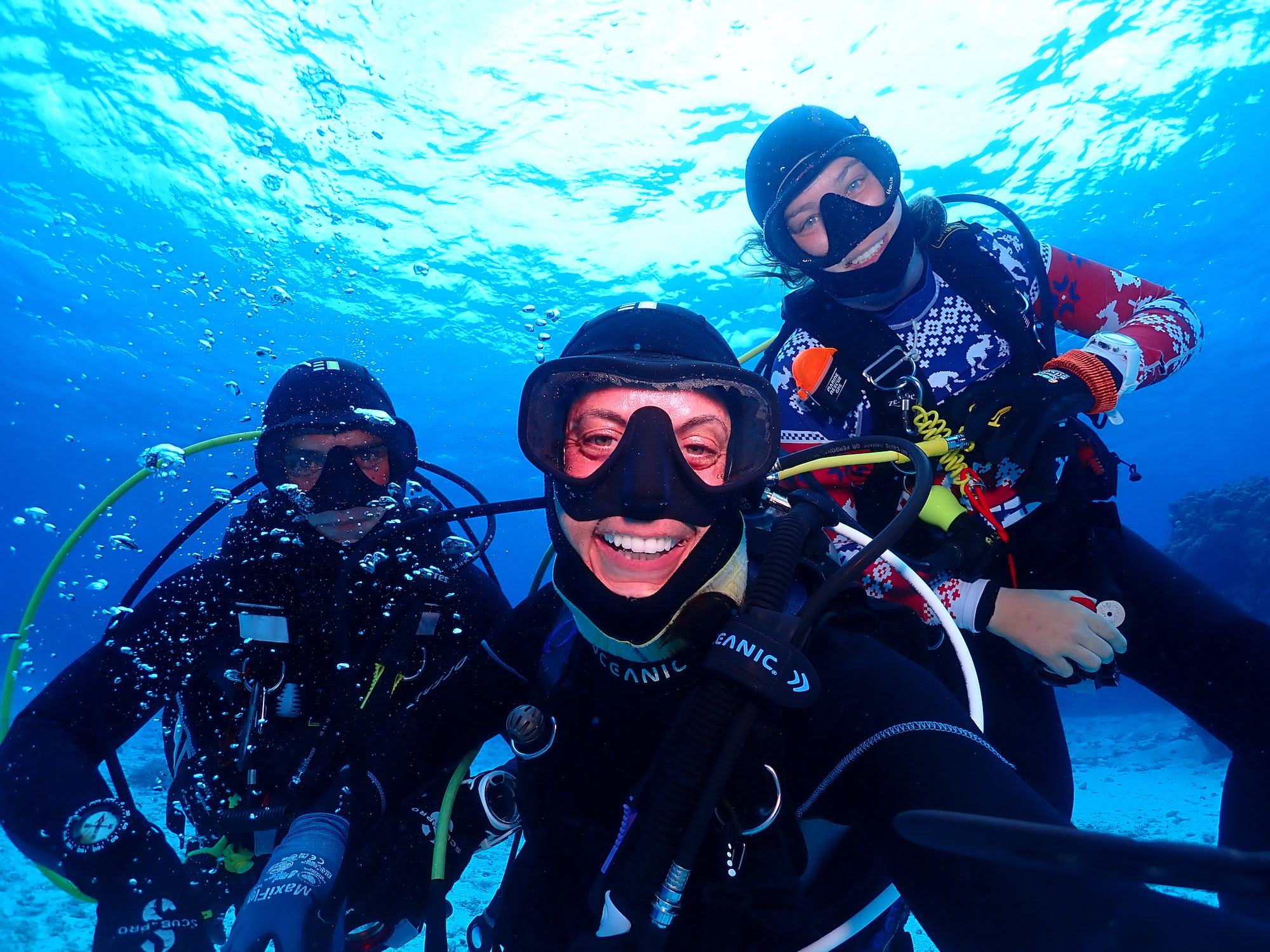
After another 24 hours of sailing, we arrived at our next reef and our new home for the next few days: Saumarez Reef. We spent three beautiful days surveying in the crystal-clear waters. Highlights included numerous sea snakes, plenty of assorted feather stars and a few friendly reef-sharks. Chris was our resident megafauna-spotter and on the last dive lucked out and spotted a Manta. Meanwhile, Mez and myself were distracted by the several large humpheaded wrasse Cheilinus undulatus at the end of our transect line.
We spent Christmas Eve sailing to Marion Reef, and were fortunate enough to encounter some stunning spinnaker weather on the way up. Chris settled in as Dusty’s sailing protégé, leaving Mez and myself plenty of time for species revision and data entry.
We arrived at Marion Reef mid-morning on Christmas, and after a quick celebratory breakfast (including the all-important Christmas pudding), we jumped back in the water to resume surveying. Being Mez’s third time to Marion, we were lucky to be there with an experienced guide who knew the sites well, making surveying a breeze. Marion highlights included diving on the stunning inner-lagoon bommies – where again, Megafauna-man Chris was lucky to see a 4m hammerhead (Sphyrna sp) while laying out a transect.
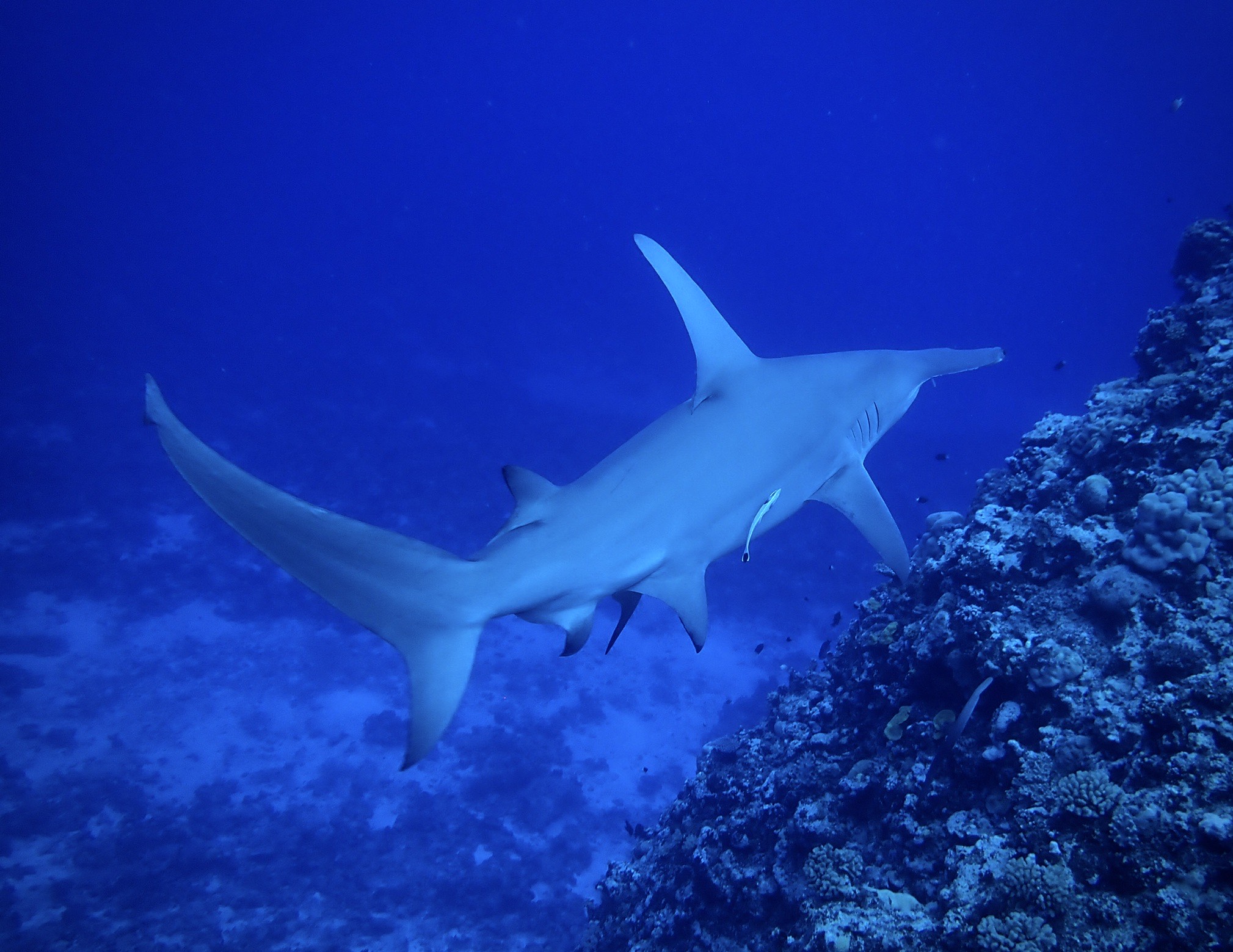
Sundowners were an evening ritual not to be missed – celebrating our achievements of the day and reviewing the interesting species we had recorded. On one of our final evenings we decided to go ashore to the weather-station sand cay for a land-based drink - a novelty in the Coral Sea. Some very careful skippering was needed to come ashore, with several large (2m+) nurse sharks cruising along the shoreline becoming altogether too interested in our little dinghy. With a big run-up we made it ashore without nibbled ankles, our precious cargo of ice-cold beers in hand.
Unfortunately, on the morning of our last planned day of diving at Marion our watchful skipper Dusty was alerted to a possible tropical low forming off the Queensland coast. After Dusty’s previous experience of a cyclone forming directly above the team while in the Coral Sea we decided not to wait and see how things developed and instead set our sails straight for the mainland. Assisted by Chris’s skills in setting speedy sails, we made it back to the mainland in good time.
While I had to depart QLD early, rushing back to Tasmania before border closures, Chris, Mez and Dusty continued surveys in the Whitsundays for a few days longer.
Overall, we completed 36 transects, recording 299 fish (M1) species and 171 invertebrate and cryptic species (M2). That’s 35, 929 fish and 1874 invertebrates! It was an amazing trip and I’m looking forward to getting out and counting fish again in 2021.
